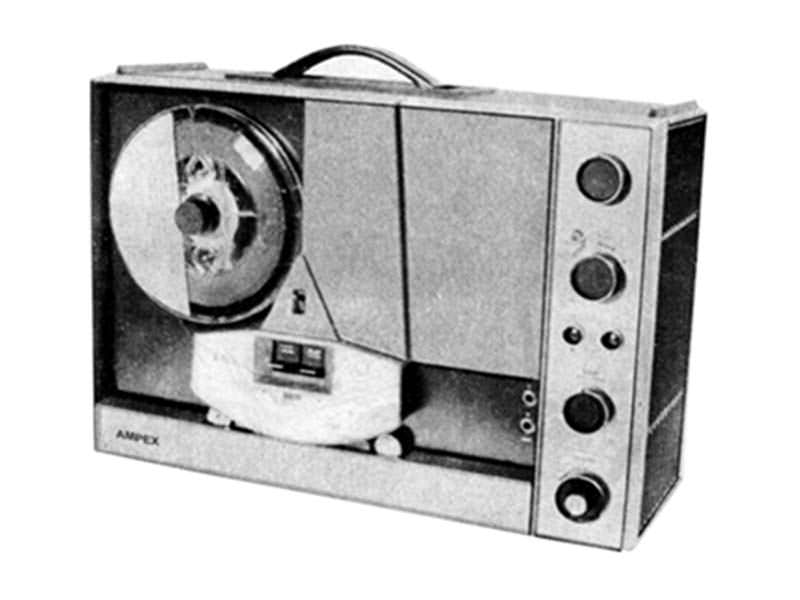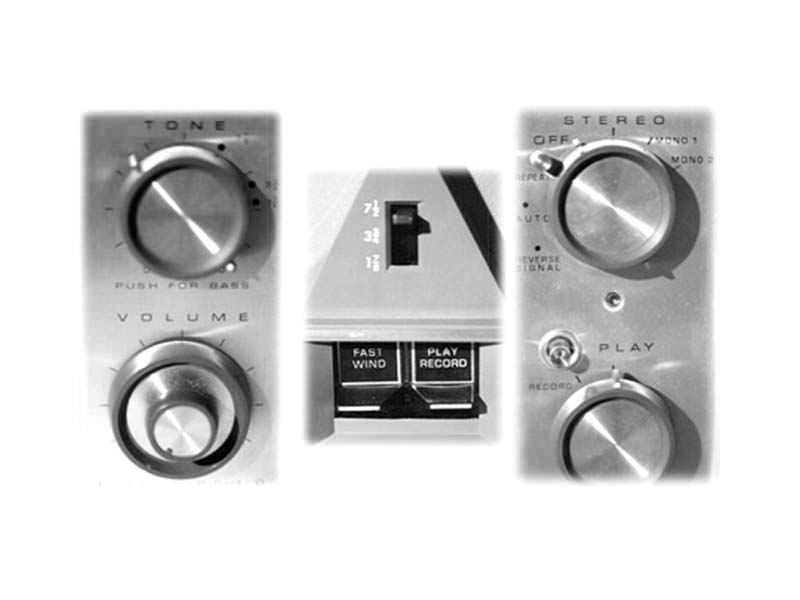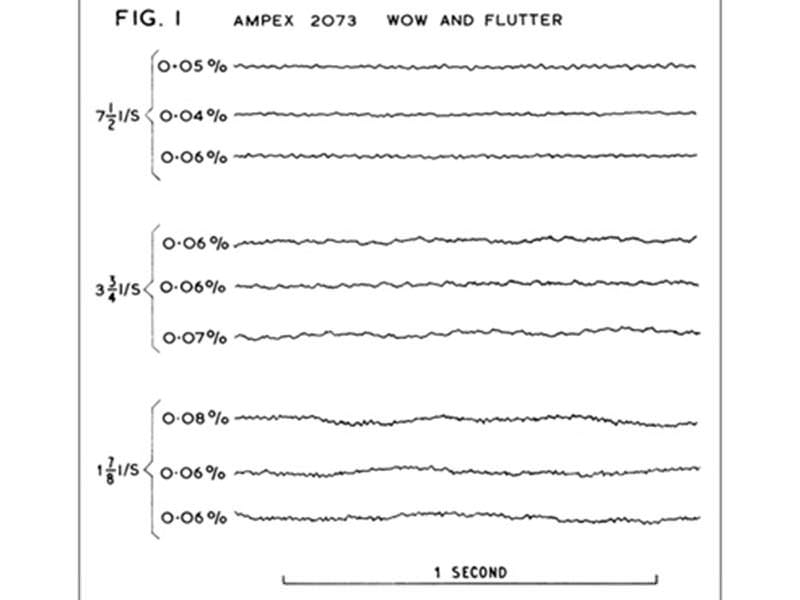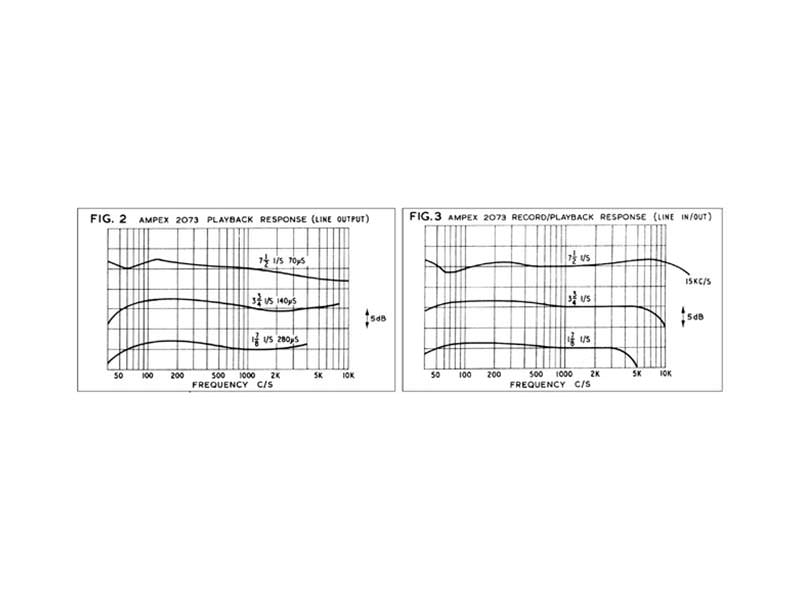Technical Details
Brand: Ampex
Model:2070
Category:Mid High Fidelity
Application:Consumer
Electronics:Solid State
Country of Manufacture:USA
Release dates:1964 - 1967
Original Price: $520
Tracks:1/4 Rec/PB+1/2PB
Speeds: 1 7/8, 3 3/4, 7 1/2
Max Reel Size("): 7"
Number of heads: 3
Head Composition: Permalloy
Head Configuration: Stereo
Voltage(s): 110-120v
Frequency Response:(all 3 dB): 7½ ips: 30Hz to 18kHz
Sound quality rating:5 / 10
Long-term reliability rating: 5/ 10
Additional Details
Description
A single motor, three speed recorder built to professional standards and performance, but with an appearance and overall operating ease which made it an attractive proposition to the domestic market for which it was intended.
The 2070 sold in the USA for $520.00 and close to £200 in the UK which put it fairly and squarely at the upper end of domestic machines at that
time.
Additional Info
Ampex 2070 – From the Tape Recorder, January 1966
ONE original feature of the 2073 is the automatic threading facility. The tape is led round the curved face of the head block and dropped into a straight slot which runs from top to bottom of a box-like casing that replaces the normal take-up reel. Inside this box is a single flanged spool with a castellated hub which grabs the tape and starts winding without any further bother. After fiddling with American style reels with no slotted flanges and a tape-anchoring slot which could only be reached by the fingers of a child of five, I can well appreciate the reason for this gimmick
It will be seen that the reels cannot be turned over and interchanged in the normal way, so that the direction of tape movement has to be reversed to play the second pair of tracks. On this machine the tape direction can be reversed at any point by recording a subsonic (20 c/s) tone on the tape. So, with a tone at each end of the tape, or desired section, the recorder will .go on repeating it robot fashion for ever more, or until somebody presses the stop key!
The tape reversing facility is easily provided because two capstans are fitted, one at each end of the head block. Both capstans are driven, and the tape held against them by pressure rollers so that the tape motion across the heads is effectively insulated from any external effect. This ‘closed loop’ system is a heritage from Ampex instrumentation FM recorders, where wow and flutter had to be held to very low levels indeed.
A contributing factor to smooth tape motion is the elimination of pressure pads on any of the heads. A single sensing rod measures the tape tension and maintains it constant by a servo braking action on the trailing flywheel. It also keeps the tape against the heads even when reversing. The excellent wow and flutter performance of this system is demonstrated by the fluttergrams of fig. 1. On this particular machine total cumulative wow and flutter did not exceed 0.1 %RMS at any of the three speeds. On each speed I deliberately stopped and started the machine several times, altering the tape position slightly on each test to try and phase the recorded and play speed imperfections so that they added. The highest reading on each set of traces was produced in this way, and only at the lowest speed on 1 i/s could the very low capstan wow be heard as a very slight waver on a constant oscillator tone. At the higher speeds the tone was dead steady and sounded particularly pure due to lack of high frequency flutter.
Playback equalisation (fig. 2) was checked by playing test-tapes recorded to 70, 140 and 280µS characteristics. The slight 3dB fall on the 7½ i/s response shows that the equalisation is to the NAB standard of 50µS. System noise, with no tape passing the heads, was 40dB below test-tape level.
Record/play tests were made from line-input to line-output at all speeds at a level 6dB below test-tape level to allow for the severe high frequency pre-emphasis which is used in recording the NAB characteristic. Fig. 3 shows some fall in high frequency response against the specification, but it should be mentioned that, as no Ampex tape was provided with the recorder, the tests were made on a good quality British tape which may, however, need a slightly different bias Nevertheless, the responses are in line with fully professional machines, which seldom promise more than 15 Kc/s at 7½ i/s, 7½ Kc/s at 3¾ i/s and 3¾ Kc/s at 1, i.e. 2 Kc/s per inch, with the bias set for minimum distortion and noise.
Overload tests at 500 c/s showed that a level 15dB above test-tape level could be recorded with no visible distortion of the recorded waveform, and that even at 17dB above test-tape the distortion was not that of violent overload, but just a slight rounding of the sine wave peaks.
The record level indicator was unusual in using a flashing neon with two electrodes, one above the other; the lower one had to be kept flashing most of the time, but flashing of the top one indicated incipient overload and corresponded to a recording level about 15dB above test-tape level. The indicators proved very easy to use, and were well suited to the gentle overload characteristic of this recorder.
Peak recording level was erased and the wide-band signal-to-noise ratio found to be 53dB. Weighted to the ear’s response at low levels, the ratio was better than 60dB.
The single knob tone control, which acts on the output stages only and does not affect the line output, proved to be rather awkward in that it was impossible to set it to give a level response at the external speaker jacks. With the pointer in the central position, the response was up 8dB at 100 c/s and 3dB at 10 Kc/s with reference to the 1 Kc/s output. With the control fully anticlockwise, the high note response was sensibly level with a bass rise of 12dB at 100 c/s. With the control fully clockwise, the bass response was level, but the high note response was up l0dB at 10 Kc/s. On the internal speakers, a few dB here or there did not matter; in fact, fig. 4 shows that the tone control can be set to give a reasonably level response over the range 200 c/s to 7 Kc/s in any listening position.
With wide-range external speakers, however, the ‘built in’ bass rise at the most level setting of the tone control was unpleasantly obvious The response of the microphone supplied with this recorder was calibrated against a standard in a white-noise sound field and gave the very level response shown in fig. 5.
COMMENT The technical performance of this recorder up to the line output is beyond reproach and reaches professional standards of frequency response, signal-to-noise ratio and tape transport. The microphone also is capable of feeding a wide-range signal to the recorder under proper acoustic conditions.
It seems a pity that the output stages and speaker system do not do full justice to the available signal. There is no lack of power and the signal is clean; it is simply a matter of poor tonal balance, which the tone control does nothing to rectify.
Another point which I did not realise until late in the review was that the machine only records from left to right, so that the self-threading reel and covers have to be removed and replaced with a normal reel so that the reels may be interchanged for recording in the other direction. In other words, the self-threading auto-reversing facility can only be used on recorded tapes However, we mere males probably do not fully appreciate the virtues of auto-threading and endless background music without changing tapes, and such facilities may well appeal to the distaff side of the family to an extent which would justify the purchase of the 2073 to feed the master’s high fidelity installation.
A. Tutchings
Wow & flutter: 0.2% at 1, 0.12% at 3¾ and 0.08% at 7½ ips / Signal to noise ratio: 43dB at 1, 48dB at 3¾ and 53dB at 7½ ips / Rewind speed: 1 minute 55 seconds for 1200ft / Audio output power: 8 watts RMS per channel / valve complement: 12AX7 x 2. 12AT7 X 3. 12AU7 x 1 / Speaker(s): two 4″ x 8″ / Dimensions: 19 x 13½ x 7½” (483 x 343 x 190 mm) / Weight: 39 lbs ( 17.7 kg) / quarter-track stereo





